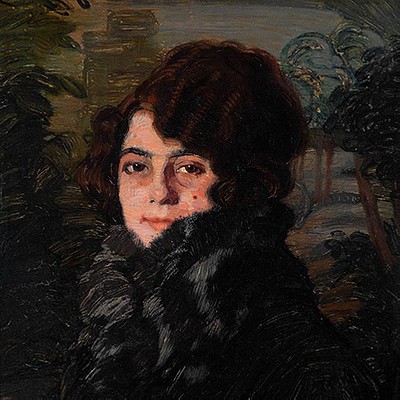HELMUTH DIRCKINCK-HOLMFELD (Denmark, 1835-1912). "Landscape with bear by a river". Oil on canvas,
Lot 14
About Seller
Setdart Auction House
Carrer Aragó 346
Barcelona
Spain
Setdart Subastas was born in 2004 and is currently the first online art auction in Spain with solidity, prestige and reliability guaranteed by our more than 60,000 users. Setdart has a young, dynamic and enterprising team ready to successfully manage the purchase and sale of art works through custom...Read more
Estimate:
EUR€1,500 - EUR€1,800
$1,612.90 - $1,935.48
Absentee vs Live bid
Two ways to bid:
- Leave a max absentee bid and the platform will bid on your behalf up to your maximum bid during the live auction.
- Bid live during the auction and your bids will be submitted real-time to the auctioneer.
Bid Increments
| Price | Bid Increment |
|---|---|
| EUR€0 | EUR€10 |
| EUR€200 | EUR€25 |
| EUR€500 | EUR€50 |
| EUR€1,000 | EUR€100 |
| EUR€3,000 | EUR€200 |
| EUR€5,000 | EUR€500 |
| EUR€10,000 | EUR€1,000 |
| EUR€20,000 | EUR€2,000 |
| EUR€50,000 | EUR€5,000 |
About Auction
By Setdart Auction House
Jul 15, 2021
Set Reminder
2021-07-15 08:00:00
2021-07-15 08:00:00
America/New_York
Bidsquare
Bidsquare : 19th & 20th CENTURY PAINTINGS & ORIENTALISM
https://www.bidsquare.com/auctions/setdart-auction-house/19th-20th-century-paintings-orientalism-7212
Setdart Auction House sofia@setdart.com
Setdart Auction House sofia@setdart.com
- Lot Description
HELMUTH DIRCKINCK-HOLMFELD (Denmark, 1835-1912). "Landscape with bear by a river". Oil on canvas, It has slight craquelure and minor damage by the passage of time. Signed. Size: 50 x 73 cm 60 x 83 cm (frame). This work shows the special light sensitivity that derives from the darkness generated by the presence of the vegetation next to the river. A darkness that does not allow to appreciate clearly the structure of the cabin located in the left zone of the composition, or the bear that is in the foreground, on the bank of the river. The light comes from the uniformly illuminated background, in which the author shows us a sky, which reaches the sunset, where the light tones alternate with the horizon, closed in this case to the sides by the presence of the trees, in black, brown, brown tones that contrast with the luminous touches obtained through the reflection of the river. It is an expressive composition, modeled through gradation and chromatic contrast, revealing the lyricism of the landscape. The pure landscape, almost without figures or totally devoid of them, reached the heroic significance of history painting during the 19th century. New artists were born who sought to deepen the idea that human feeling and nature should be complementary, one reflected in the other. That is, the landscape should arouse emotion and transmit ideas. Thus, landscape painters like the author of this painting tried to express their feelings through the landscape, instead of imitating it. The romantic landscape had two main aspects: the dramatic, with turbulent and fantastic views, and the naturalistic, which emphasized images of a peaceful and serene nature, as in this case. It is this second conception that we see embodied in this work; the painter tries to communicate a religious reverence for the landscape, nature in its fullness, free from the industrial elements of modern life. In fact, the painter's use of light here conveys a dreamy atmosphere, inviting the viewer to meditate and contemplate himself in the landscape. The romantic landscape is nevertheless made up of manifestations of very different types and not comparable to each other; it does not affect all the national schools equally, remaining more faithful to the tradition in schools such as the French or Dutch. Thus, in this canvas we do not find the grandiose scenographies of the British and Germans, the rugged mountains or the monumental Gothic ruins. On the contrary, it is a landscape centered in the foreground, a space enclosed in the background by the city. The most typical elements of the romantic landscape, such as the hostile climate or the Gothic ruins, do not appear. Likewise, the typical romantic perspective is used, very marked, in abyss, which is complemented by a slight confusion of points of view. Despite these local differences, this romanticism contained in the form, we find however a clearly poetic content, which goes beyond the simple representation of the natural to capture nature as a reflection of the author's feelings.
- Shipping Info
-
In-house shipping available. Please inquire at admin@setdart.com.
-
- Buyer's Premium



 EUR
EUR CAD
CAD AUD
AUD GBP
GBP MXN
MXN HKD
HKD CNY
CNY MYR
MYR SEK
SEK SGD
SGD CHF
CHF THB
THB



















